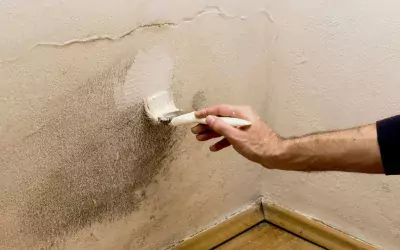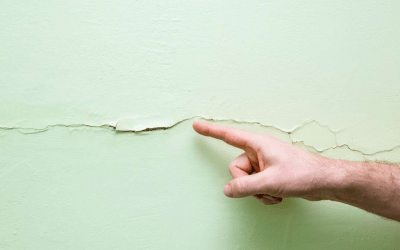If drywall gets wet is it ruined? What should I do about damp drywall? These questions are especially relevant for our Florida residents who frequently face the unique challenges posed by our local weather. In this post, we’re focusing on this common yet critical issue in Floridian homes: What happens when drywall gets wet due to the region’s high humidity, frequent storms, and occasional flooding? Understanding the impact of Florida’s weather on drywall is essential for maintaining the integrity and appearance of your home’s interior. Join us as we delve into the damp dilemmas of drywall in the Sunshine State and uncover effective strategies to address and prevent moisture damage.
The effects of water on drywall
Drywall, composed primarily of gypsum encased in paper, is particularly susceptible to water damage. Here’s what happens when it gets wet:
- Structural weakening: The gypsum core absorbs water, leading to swelling and disintegration. This weakens the structural integrity of the drywall, potentially causing it to crumble or collapse.
- Mold growth: Damp environments are breeding grounds for mold. Wet drywall can quickly become a hotspot for mold proliferation, posing health risks and further damaging the material.
- Staining and aesthetic damage: Water exposure often leaves unsightly stains and can warp or bubble the surface of the drywall, compromising the aesthetic appeal of your walls.
- Insulation compromise: When installed in exterior walls, wet drywall can affect the insulation properties, leading to increased energy costs and reduced efficiency.
Steps to address wet drywall
- Identify the source of moisture: First and foremost, locate and address the source of the water. Whether it’s a leaky pipe, roof damage, or flooding, stopping the water is critical to prevent further damage.
- Assess the extent of damage: Examine the affected area to determine the severity of the water damage. Small, contained areas may be salvageable, while extensive or long-term exposure often necessitates replacement.
- Dry out the area: Use fans, dehumidifiers, or natural ventilation to dry out the wet drywall as quickly as possible. This step is essential to prevent mold growth and further deterioration.
- Remove or repair damaged drywall: If the drywall is swollen, crumbling, or showing significant mold growth, it should be cut out and replaced. For less severe cases, after drying, surface repairs like spackling or sanding might suffice.
- Prevent mold growth: Treat the area with a mold-inhibiting solution to prevent future mold issues. This is especially important in hidden areas, like behind baseboards or in wall cavities. Painting over mold is not recommended without some prior treatment.
- Restore and repaint: Once the structural and mold issues are addressed, you can restore the drywall’s appearance. This may involve reapplying joint compound, sanding, and repainting to achieve a seamless finish.
Conclusion
Dealing with wet drywall can be a challenging task, but understanding the steps to properly address it can save you from more significant problems down the line. If the damage is extensive or you’re unsure about tackling the issue yourself, don’t hesitate to call in professionals.
At All Star Painter, we’re equipped to handle all your drywall needs – from water damage assessment to drywall repair services and repainting. Our team of experts ensures that your walls not only look great but are also safe and structurally sound. Contact us for a consultation or more advice on dealing with wet drywall. Let us help you keep your home in top condition, no matter what challenges arise!



